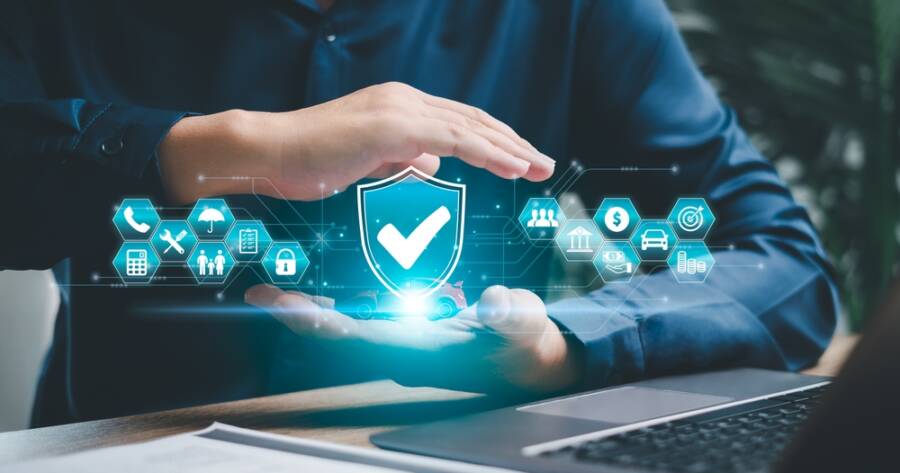As e-commerce continues to grow exponentially, it has revolutionized how we shop, bringing the world to our fingertips. This evolution offers incredible convenience, making it possible to purchase almost anything from virtually anywhere. However, the digital marketplace is not without its risks. Navigating online shopping securely can be complex, and exercising caution is crucial.
Understanding E-commerce Security
In the vast digital marketplace, security should be a primary concern for consumers. Although online shopping offers unmatched ease and efficiency, risks like identity theft and financial fraud are potential threats.
Understanding the foundations of e-commerce security could be essential for ensuring your transactions remain secure. Websites with HTTPS encryption are generally considered safer as they encrypt data transfers, which might significantly reduce the chance of sensitive data being intercepted.
Recognizing Safe Websites
Evaluating the safety of a website is a potentially crucial step in ensuring secure online transactions. Secure sites may display a padlock symbol before their URLs and use HTTPS rather than HTTP. Always look for these indicators, as they suggest that the website encrypts its data.
It’s also advisable to ensure you’re dealing with reputable platforms. Reading reviews and checking ratings might provide useful insights into a site’s security credentials.
Creating Strong and Unique Passwords
Passwords are often the first line of defense in protecting your online accounts. It is usually recommended to use complex, unique passwords that include a combination of letters, numbers, and symbols. Refraining from using easily guessed passwords like birthdays or simple number sequences could be wise.
Moreover, consider changing your passwords periodically and avoid using the same password across multiple sites, as this could reduce the risk of multiple accounts being compromised if one is breached.
Utilizing Two-Factor Authentication
Two-factor authentication (2FA) might provide an added layer of security by requiring two forms of verification. This could significantly enhance your account protection.
Many e-commerce platforms offer this feature, often available through a simple setup in your account settings. By incorporating something you know (like a password) with something you have (such as a smartphone), 2FA could make unauthorized access more challenging.
Being Cautious with Public Wi-Fi
Public Wi-Fi networks are notoriously insecure, which may make them a target for cybercriminals. When shopping online, it might be vital to avoid using public Wi-Fi for accessing personal or financial information.
If using these networks is unavoidable, consider employing a virtual private network (VPN), which can encrypt your data and potentially provide a more secure connection.
Identifying Phishing Scams
Phishing scams are fraudulent attempts to obtain sensitive information by pretending to be trustworthy entities. These scams may manifest as emails or messages that appear legitimate but are aimed at stealing your personal data.
It’s beneficial to scrutinize unsolicited communications, especially those requesting personal information or login credentials. If in doubt, it’s prudent to contact the company directly through verified channels rather than using contact information provided in the email.
Safeguarding Payment Information
When entering payment details online, there are several safety measures that might help protect your information. Using digital wallets or payment methods like PayPal can be a useful option, as they generally don’t share your full credit card information with merchants. Additionally, setting up alerts for your banking transactions can assist in quickly identifying unauthorized activities, allowing for prompt action.
Responsible Sharing on Social Media
Social media profiles might seem like an informal space, but oversharing can potentially lead to security vulnerabilities. Sharing information about recent purchases or future shopping plans publicly might give fraudsters insight into your habits and preferences. It’s advisable to review privacy settings on your socials and be cautious about the visibility of your posts and personal information.
Keeping Software Updated
Regularly updating your device’s software is often key in defending against security threats. Software updates frequently contain patches for known vulnerabilities that hackers might exploit.
This includes operating systems, browsers, and security software. Employing automatic updates can be an effective way to ensure you’re always protected with the latest security enhancements.
Learn More Today!
E-commerce has opened global avenues and provided unparalleled convenience, but secure transactions require vigilance. By understanding security fundamentals, using strong passwords, enabling additional verification methods, and being cautious about the networks and websites you utilize, you might fortify the safety of your online shopping experiences. Staying informed and cautious can significantly contribute to a safer digital buying landscape, potentially allowing consumers to enjoy the benefits of e-commerce without unnecessary risk.

